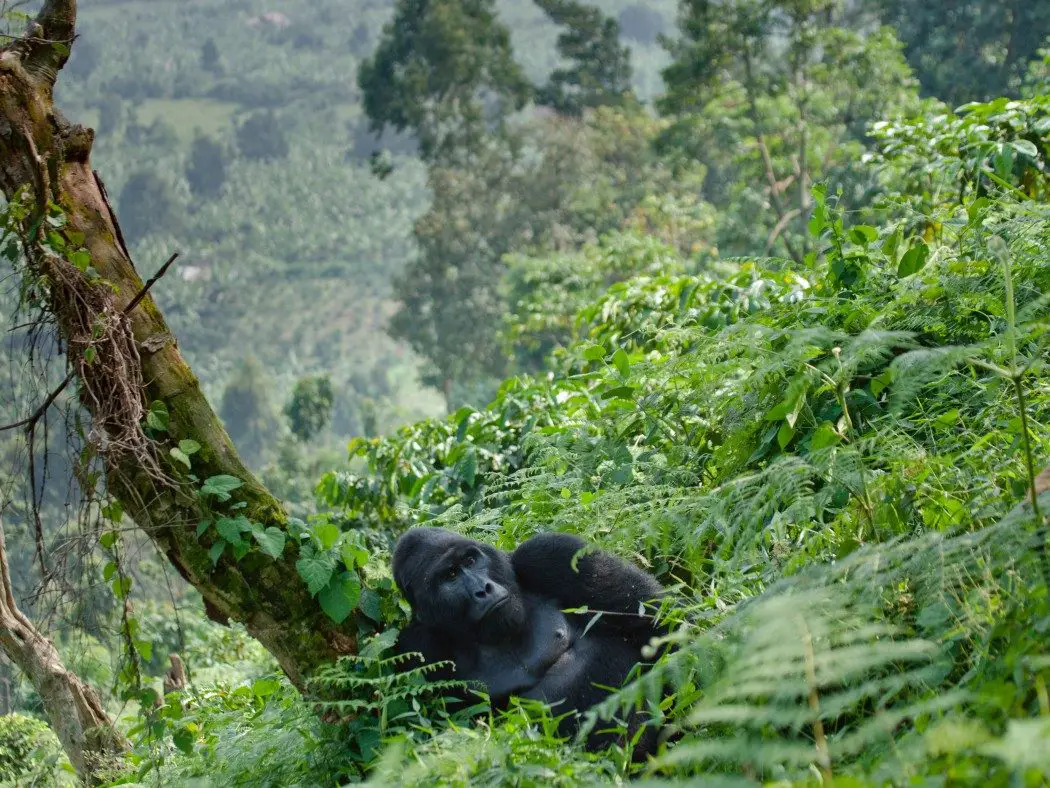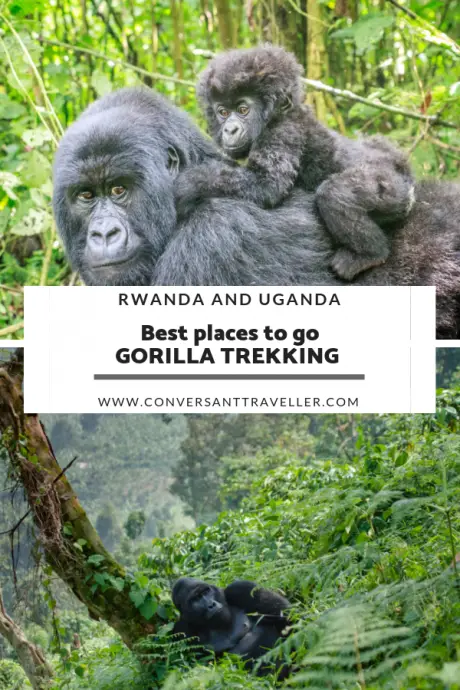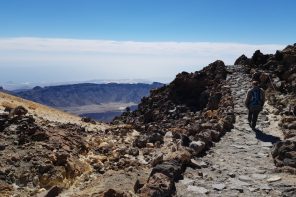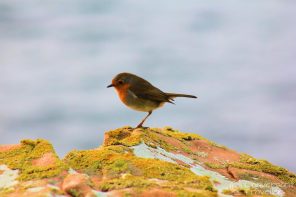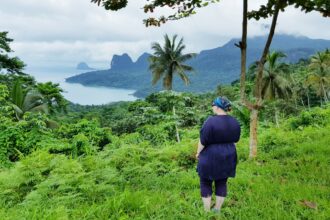For many travellers, gorilla trekking in Rwanda or Uganda is the ultimate adventure. Hiking through dense jungles, with the anticipation of coming face to face with a family of wild mountain gorillas isn’t a feeling that can be rivalled. It’s one of those things you really have to experience first hand to understand. Yet how do you choose between going gorilla trekking in Rwanda or Uganda? Here we give you the low-down on gorilla safari holidays in both countries, to help you make up your mind.
Mountain gorillas are a critically endangered species, as a result of habitat destruction, civil wars and viruses such as Ebola. Poaching is a huge problem too, as gorillas are killed for their meat, as well as body parts, which some people believe have healing and medicinal properties. Since female gorillas only ever give birth up to four times in their lives, re-population is a long and slow process, and conservation efforts are key to the survival of these majestic creatures.
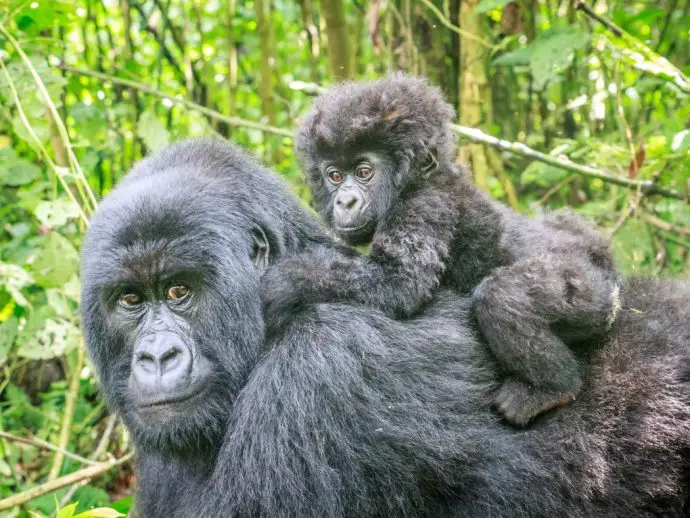
Yet gorilla conservation and study is an expensive business, which is why gorilla trekking tourism is crucial to continuing this important work. Gorilla safari holidays also provide jobs for the local community, from guides to lodge staff, which in turn encourages the communities to preserve rather than poach. At present, just a small percentage of Africa’s gorilla population is protected, so the pursuit of attaining new land and hiring more anti-poaching units is the only way forward.
Spending time with gorillas in the misty mountains of Rwanda or the dense rainforests of Uganda is one of life’s greatest privileges, and an experience we hope will continue to be available to visitors for many decades to come.
Gorilla Trekking in Rwanda
The best place to go on gorilla safaris in Rwanda is the Volcanoes National Park, which is home to around 12 habituated gorilla groups. It’s a beautiful part of the country to visit, and there are several luxury lodges here if you want to linger a few days, which we highly recommend as there’s plenty to see and do.
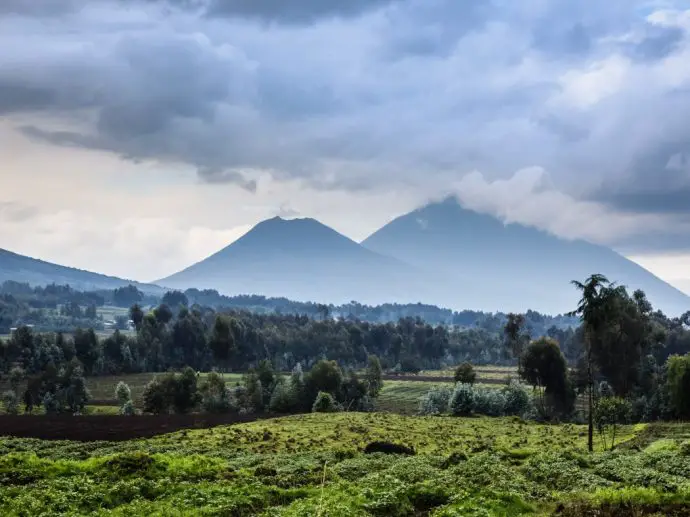
A maximum of 96 gorilla trekking permits are issued each day in the Volcanoes National Park, which means no more than eight visitors in each group, keeping the experience intimate, and exclusive.
This is the area where you’ll also find Karisoke Mountain Gorilla Research Centre, once home to Dian Fossey, the famous champion of gorilla conservation. She spent 20 years living here undertaking research, and wrote the famous book Gorillas in the Mist, which was later turned into a film in 1988. Constantly battling poachers, she ultimately lost her life in 1985 fighting for the cause that was closest to her heart. Yet her legacy lives on, and research centre staff continue with her work today. Visitors can pay their respects at her grave site, where she was buried beside her favourite gorilla, Digit.
How to get to Volcanoes National Park
It’s really easy to go on a gorilla trekking holiday in Rwanda. There are direct flights from London to Kigali, the Capital of Rwanda, with Rwandair, and from there it’s just a three-hour drive to the national park. In fact if you’re really short on time, you can even go gorilla trekking straight from Kigali without having to spend the night in the national park, although it’s a super early start at 4.30 am so we do recommend doing it over two or three days if you’re able.
Gorilla Trekking in Uganda
The best place to go gorilla trekking in Uganda is undoubtedly Bwindi Impenetrable National Park, what a name! The dense rainforests here are some of the oldest and most bio-diverse in the country, covering a vast 200 square miles. Bwindi is home to around half of the world’s population of mountain gorillas, some of which are habituated, which makes it possible to spend time observing them at close but respectful quarters. It’s a truly moving, and exhilarating experience.
Gorilla tours in Uganda also take place in Mgahinga Gorilla National park (the smallest park in the country), which is roughly 30 miles from Bwindi. However seeing the gorillas here is harder than in Bwindi as there’s only one habituated group, with a maximum of eight visitors per day. Yet if you don’t get a chance to see the gorillas here, you may instead catch sight of the beautiful golden monkeys, and even leopards if you’re lucky. This area is great for bird watching too, with several endemic species found here.
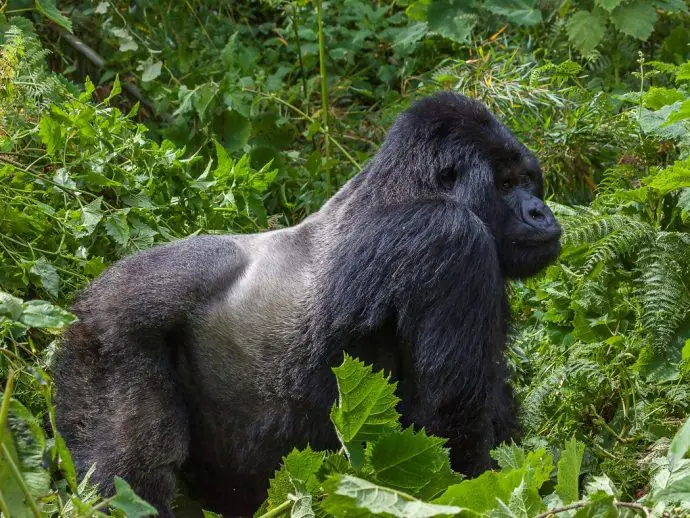
How to get to Bwindi Impenetrable National Park
You can fly from London to Entebbe, and then need to make your way to Queen Elizabeth National park (a road trip of around seven hours). From here you can access Bwindi with a short drive of 2-3 hours. If you prefer to avoid long road journeys, it’s possible to fly from either Kampala or Entebbe to Kihihi or Kisoro near Bwindi, which cuts down on travel time.
How fit do you have to be to go Gorilla Trekking?
Gorilla trekking is hard work, hiking through dense jungle, which is sometimes slippery and uneven underfoot, but once you’ve made it to where the gorilla family is spending their day, all hardship is forgotten as you watch the youngsters play, as the adults keep a watchful eye on their offspring.
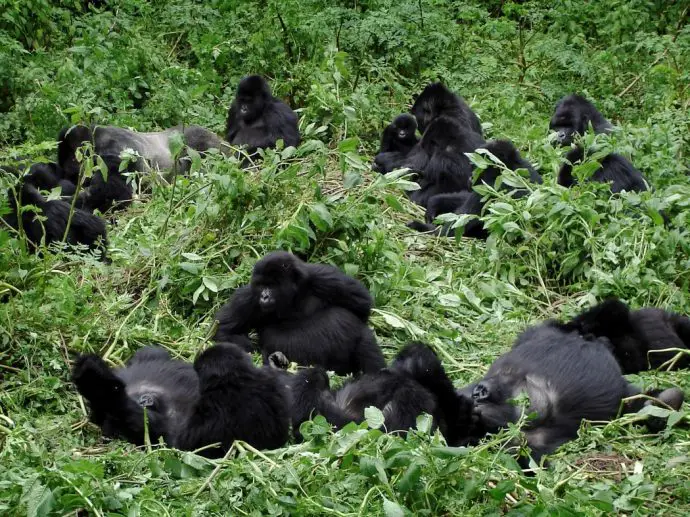
People of all ages and abilities enjoy gorilla trekking, and whilst you don’t need to be super fit, it certainly helps to have a decent level of fitness to be able to cope with the humidity, altitude, and steep hikes, some of which can last for several hours. So you might want to do a bit of hill walking training before your trip, to build up your endurance and make sure that both you, and the rest of your group, fully enjoy the experience.
Trekkers are assigned to a gorilla family according to ability. Those who can cope with longer, steeper hikes will go off in search of the gorilla families higher up the slopes, whilst visitors with less mobility will often enjoy shorter treks to groups who are lower down in the forest.
If you fall ill during your holiday, you won’t be able to visit the gorillas as their immune systems can’t fight human diseases, so try and stay healthy prior to your trip!
What to expect on the day
Gorilla trekking in both Rwanda and Uganda involves an early start, beginning with a briefing from the park rangers and guides. You’ll be split into groups and allocated a gorilla family. The length of the day depends on how far you have to hike to reach the group, but everyone will spend up to one hour with the family. Treks can be as short as a couple of hours, or last up to nine hours. Visitors will sit quietly a respectful distance from the group, watching them interact and feed. Sometimes the gorillas choose to come close, and may even brush past you. If this happens, you’ll be advised to sit still, and not to touch them. It’s an incredible experience.
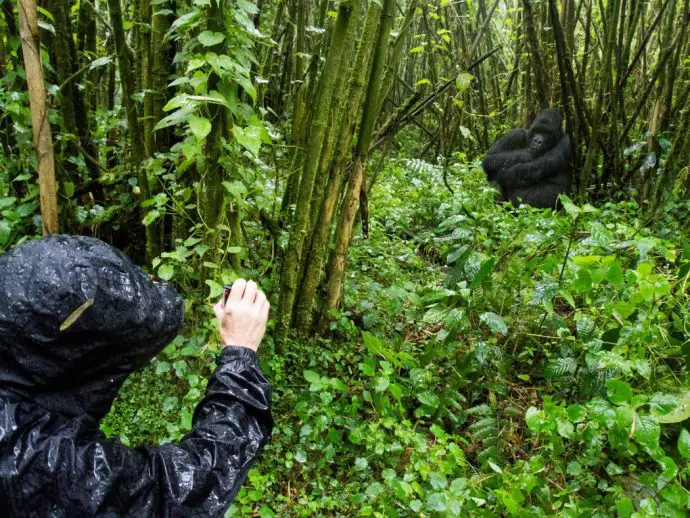
Whilst it’s not possible to guarantee gorilla sightings, the success rate is around 100% because trackers go out at dawn to locate the groups and radio back the coordinates to headquarters before you leave on your trek. They then stay with the group to ensure they can direct the trekkers in case the gorillas decide to move. They’ll also have cleared a pathway through the forest for you to follow, so although it will be rough and uneven underfoot, hiking is made as easy as possible.
How much do Gorilla Permits Cost?
It’s true, gorilla trekking permits are expensive, but part of the fee goes directly back into conservation efforts as well as community development and education, so it is money well spent. In order to control tourism, the number of visitors allowed to go gorilla trekking each day is strictly controlled, so you need to make sure you book your permits well in advance, especially during the dry season.
Rwanda
US$1500 per person (minimum age is 15 years)
Uganda
US$600 (minimum age is 15 years). This will rise to $700 from 1st July 2020.
Both these permits allow for one gorilla trek with up to an hour with the chosen family.
Best time to go Gorilla Trekking in Africa
Gorilla trekking can be done year-round, and deciding when to go often comes down to weather, and price. Hiking is undoubtedly easier during the drier months of January and February, and June through until September, when the jungle floor is less muddy and wildlife is easier to spot, but these periods are the busiest, which means you need to book accommodation and permits far in advance.
However tour companies and lodges often offer discounts during the wet season in October and November, and between March and June, and permits are generally easier to obtain for trekking during these periods. Hiking is usually harder in the mud, but don’t be put off by the weather, as the rains generally fall in early mornings and late afternoons, meaning your trekking window itself is often dry.
Mountain Gorillas are around all year so you’ll have excellent chances of seeing them no matter what time of year you travel. It’s worth noting that gorillas are usually found higher up the mountain during the dry season, whilst they tend to descend to lower slopes during the rains.
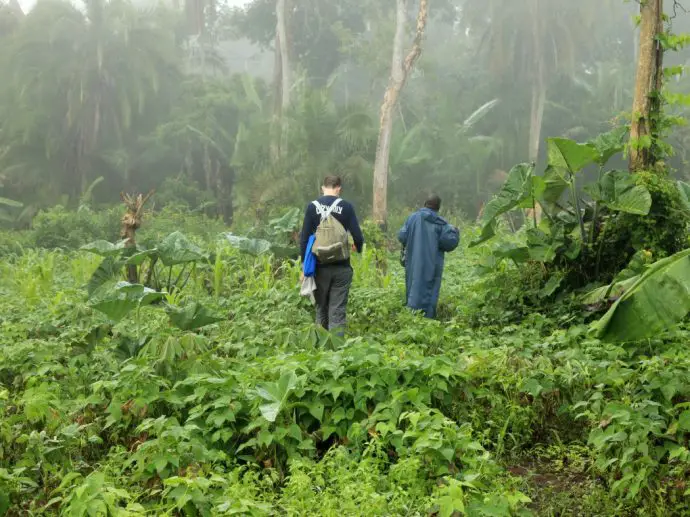
Rwanda or Uganda?
Gorilla trekking safaris in both countries are incredible experiences, so choosing your location really comes down to money, and access. Whilst permits in Rwanda are more than double those in Uganda, it’s really simple to access the Volcanoes National Park, and trekking is often a bit easier than in Uganda. If budget plays a key factor in your trip, and you have more time on your hands, then head to Uganda, where the extra effort required to reach the gorillas just makes the trip even more rewarding.
What to pack for gorilla trekking
Trekking in a tropical climate requires certain types of clothing, to make sure your experience is a comfortable and memorable one. Here are our recommendations of what gear you should pack for a gorilla trek in both Rwanda and Uganda:
- Long trousers and long-sleeved shirts to protect from undergrowth and insects
- Lightweight, sturdy hiking boots with ankle support, and thick socks
- Compeed, in case of blisters
- Hiking poles, to help you up steeper slopes, and aid with balance whilst traversing sections of virgin undergrowth
- Gaiters, especially during the wet, muddy season
- Breathable waterproof jacket and trousers
- Binoculars and camera
- Warm layers, it can be cold during the early morning and at night
- Sun protection
- Insect repellent
- Gloves are a good idea to protect your hands when you grab the undergrowth for balance
- Water bottle
- Small day rucksack
- Snacks for energy
Have you been gorilla trekking in Rwanda or Uganda? Let us know what you thought about your experience!

